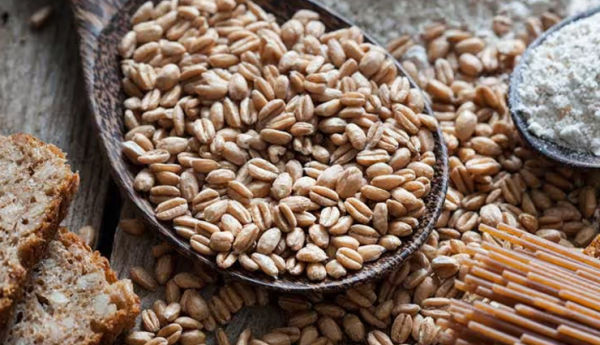
Spelt, also known as dinkel wheat, is a light reddish-brown wholegrain that dates back to ancient times. First cultivated in Europe around 8,000 years ago, it closely resembles wheat in appearance. The grain of the spelt plant, known as spelt grain, is milled into spelt flour, which has a slightly nutty and sweet taste, similar to wheat flour. The popularity of spelt can be traced back to the 18th century, with the German village of Dinkelsbuhl highlighting its historical significance. Later, it was introduced to the United States in the 19th century and gained worldwide recognition.
Botanically known as Triticum spelta, spelt belongs to the Poaceae family, which also includes wheat, barley, and rye. Like its relatives, spelt contains gluten. However, its gluten is more delicate and water-soluble compared to the stronger, more elastic gluten found in wheat.

# Regulates Cholesterol Levels
Spelt is rich in soluble fiber, which helps reduce the absorption of bad cholesterol (LDL) while promoting good cholesterol (HDL), thus supporting heart health.
# Supports Cardiovascular Health
High cholesterol can lead to plaque buildup in the arteries, increasing the risk of heart disease. The fiber and magnesium in spelt help regulate cholesterol levels, reducing the likelihood of heart conditions like strokes and heart failure.
# Improves Digestion
The dietary fiber in spelt aids digestion by promoting regular bowel movements and alleviating issues like constipation, bloating, and diarrhea.
# Aids in Weight Management
Foods high in fiber promote a feeling of fullness, reducing the tendency to consume high-calorie, unhealthy foods. Spelt's fiber content helps control appetite and supports weight management.
# Helps Manage Hypertension
High blood pressure is often linked to cholesterol buildup in the arteries, leading to restricted blood flow. By reducing bad cholesterol, spelt helps maintain healthy blood pressure levels.

# Regulates Blood Sugar Levels
# Supports Bone Health
Spelt is rich in manganese, a mineral essential for maintaining strong bones. Regular consumption may help prevent osteoporosis and reduce the risk of fractures.
# Balances Hormones
Vitamin B3 (niacin) in spelt plays a crucial role in supporting adrenal gland function, which regulates hormone production and helps prevent hormonal imbalances.
# Reduces Migraine Frequency
Magnesium in spelt helps prevent migraine attacks, while vitamin B2 (riboflavin) supports brain function and alleviates headaches, stress, and related symptoms.
# Prevents Anemia
Spelt is a great source of iron, which is vital for hemoglobin production and oxygen transportation in the body. Adequate iron intake helps prevent anemia by maintaining healthy red blood cell levels.









